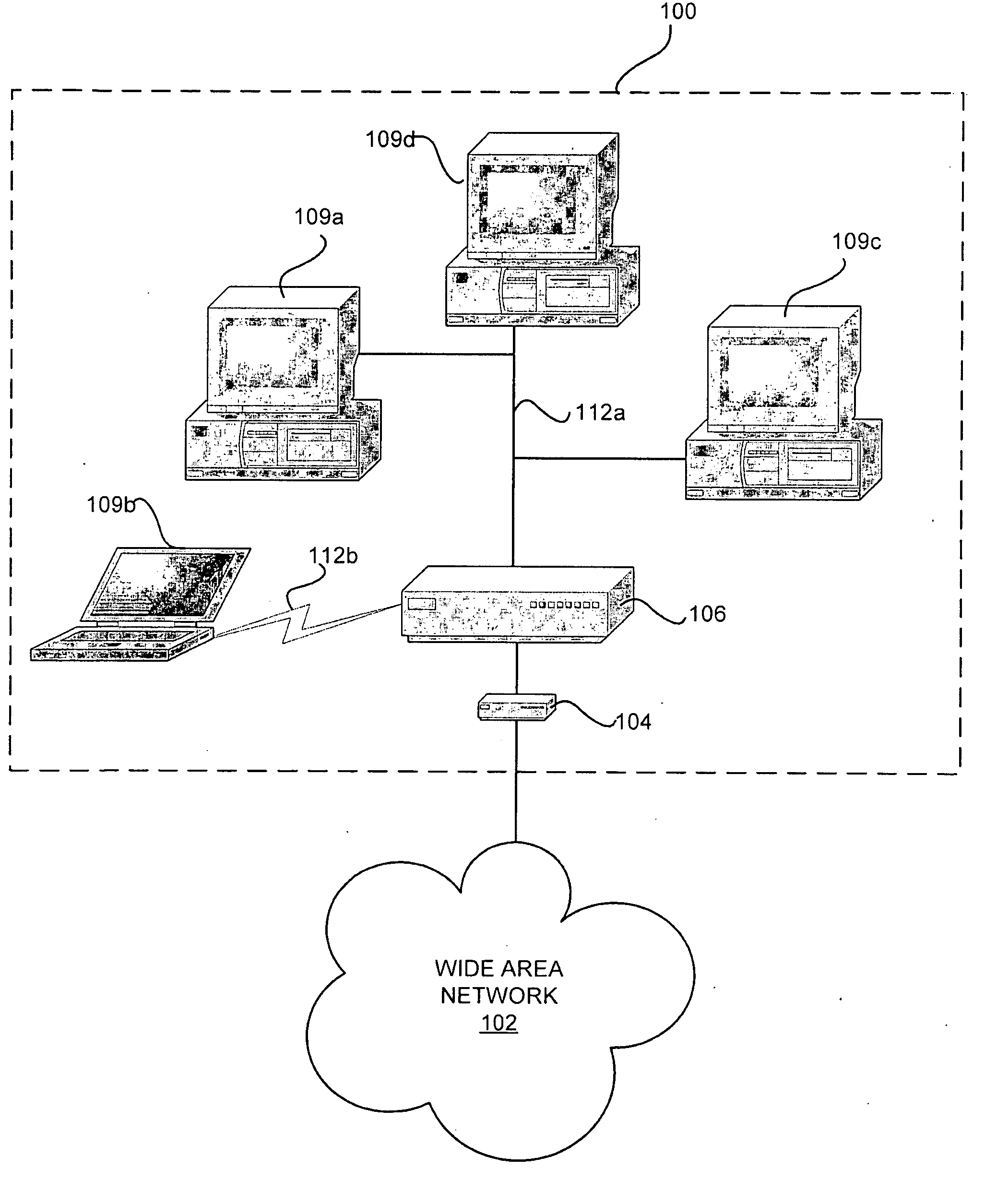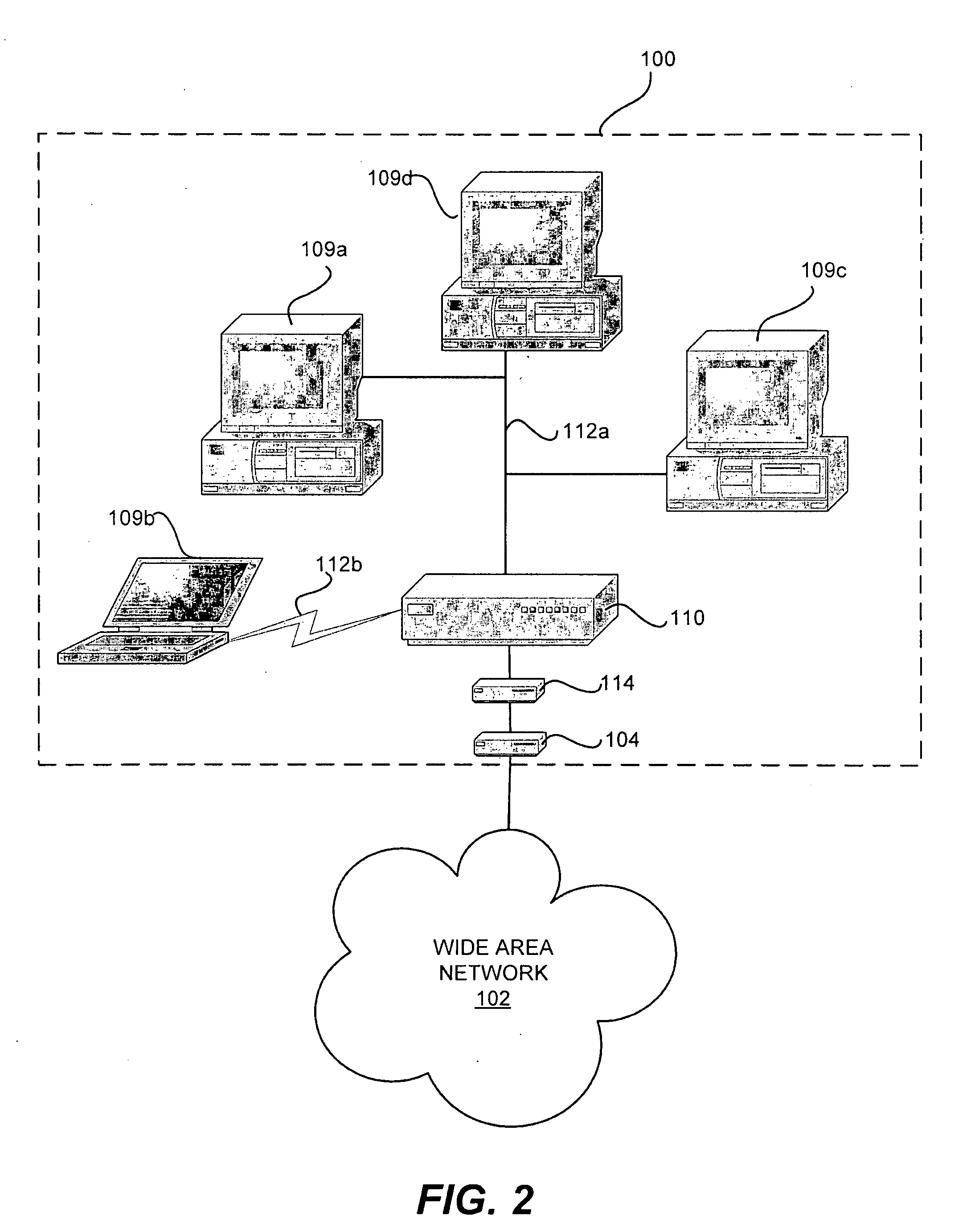Automatic adaptive network traffic prioritization and shaping
a network traffic and automatic adaptive technology, applied in the field of small office/home office, can solve problems such as data delay, degraded user experience, performance degradation, or malfunction, and the downstream connection is also slower
- Summary
- Abstract
- Description
- Claims
- Application Information
AI Technical Summary
Benefits of technology
Problems solved by technology
Method used
Image
Examples
Embodiment Construction
[0028]The Figures and the following description relate to preferred embodiments of the present invention by way of illustration only. It should be noted that from the following discussion, alternative embodiments of the structures and methods disclosed herein will be readily recognized as viable alternatives that may be employed without departing from the principles of the claimed invention.
[0029]Referring now to FIG. 1, a system level diagram of one embodiment of a local area network environment in accordance with the present invention is shown. This description refers to the LAN environment 100 as the local network 100, which may include a SOHO network environment, a home network environment, an enterprise local network environment, e.g., intranet, or other similar local network environments. The local network 100 connects to a WAN 102, such as the Internet, an enterprise network, or the like, to provide broadband services to the local network, e.g. SOHO / home LAN, for example, Int...
PUM
 Login to View More
Login to View More Abstract
Description
Claims
Application Information
 Login to View More
Login to View More - R&D
- Intellectual Property
- Life Sciences
- Materials
- Tech Scout
- Unparalleled Data Quality
- Higher Quality Content
- 60% Fewer Hallucinations
Browse by: Latest US Patents, China's latest patents, Technical Efficacy Thesaurus, Application Domain, Technology Topic, Popular Technical Reports.
© 2025 PatSnap. All rights reserved.Legal|Privacy policy|Modern Slavery Act Transparency Statement|Sitemap|About US| Contact US: help@patsnap.com



